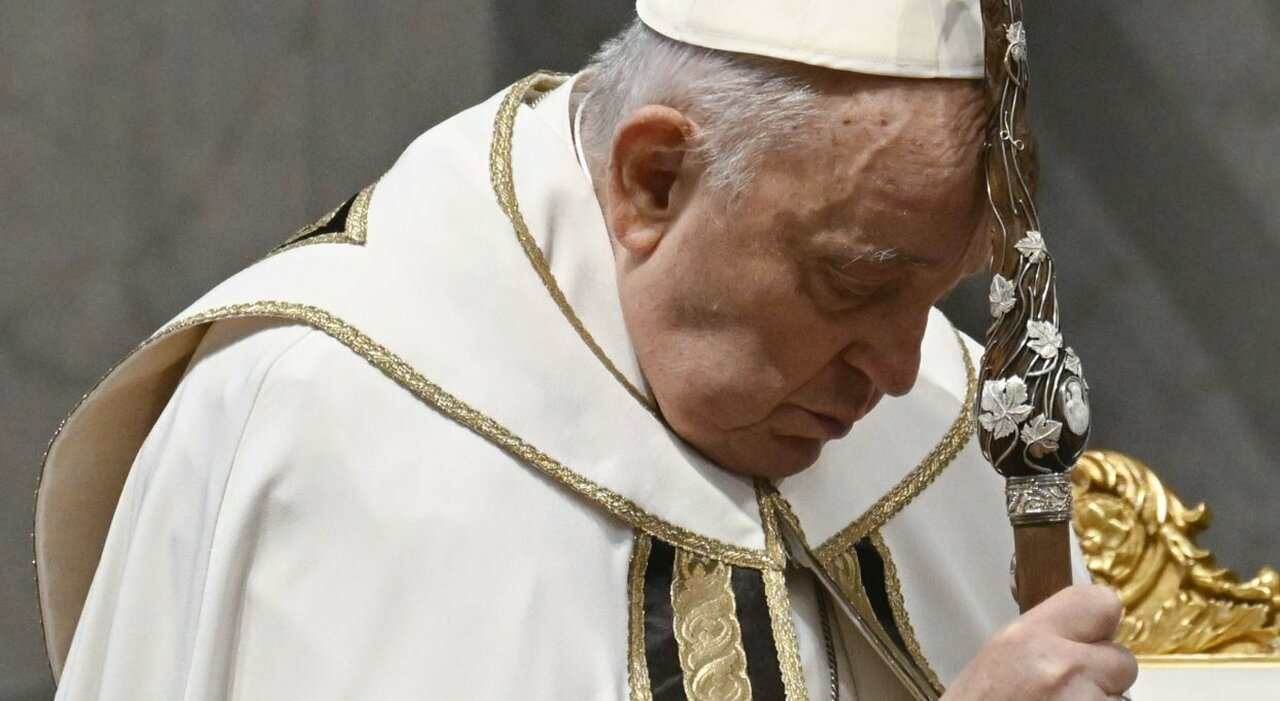Saturday 30 March 2024, 11:52 - Last updated: 15:00
The eighty-seven years that weigh heavily, the energy that is increasingly reduced at the end of the day, and the obvious respiratory difficulties have forced Pope Francis to take a step back at the Via Crucis. This morning, his agenda was cleared of official commitments to allow him to recover all the energy necessary to face one of the longest liturgies: the Easter Vigil. Meanwhile, the Vatican did not want to release any medical bulletin on his condition, although it confirmed that he will not fail to be in St. Peter's Basilica tonight for the vigil. The mass will last no less than two hours so rich is it with symbolic moments like the lighting of the fire in the atrium of the basilica, the singing of the Exultet, and the baptisms.
The images of the Via Crucis at the Colosseum last night will leave some lasting impressions. One above all: when the papal chair was carried away at the Palatine by two attendants under the astonished gaze of Mayor Gualtieri who arrived specifically for the religious event. The shock was general.
The impressions left by the meditations read last night are still tangible. They were written by Francis, an absolute novelty. Through intense and intimate lyricism, he accompanied all the stations of the Via Crucis with compositions inspired by the passages of the Gospel. Francis structured the almost poetic form imagining to personally dialogue with Jesus. In some ways, it can even appear as a sort of legacy, a testament, rich in spirituality and content that refers to his encyclical Fratelli Tutti. In other passages, the emotion and constant entrustment to faith are perceived. It is also a hymn to the mercy of the Savior: "I will fall in life, but with love, I will be able to rise and go forward, as you did who are experienced in falls. Your life, in fact, was a continuous falling towards us."
In the meditations, the word "war" is present only twice, but the drama is not for this evoked any less. It speaks of the children who have lost their smile and of those who suffer. It is easy to imagine Gaza, Israel, Ukraine, Syria even if no explicit mention is made perhaps to avoid the controversies of past years with even diplomatic repercussions. It had happened with Russians and Ukrainians. The poetics of Pope Bergoglio collects all the tears of the poor Christs, the women victims of femicide, those who are hit by persecutions and even those who have been targeted by haters, the haters on social media who issue judgments without mercy, just as it happened to Christ along the way of Golgotha.
"Jesus many follow the barbaric spectacle of your execution and, without knowing you and without knowing the truth, issue judgments and condemnations, casting infamy and contempt on you. It also happens today and not even a macabre procession is needed, just a keyboard to insult and publish sentences." Only Veronica makes her way through the crowd, a woman who goes against the current and is moved. "Her gesture will go down in history and it is a gesture of consolation."
To women, he dedicates intensely heartfelt words. "Jesus, who follows you to the end along the way of the cross? Not the powerful who await you on Calvary, not the spectators who stand far away, but the simple people, great in your eyes and small in those of the world. They are the women to whom you have given hope: they have no voice but they make themselves heard. Help us to recognize the greatness of women, those who were faithful and close to you at Easter, but who even today are discarded suffering outrages and violence."
In this panorama of "the humiliated by arrogance and injustice" no one is excluded. We all carry crosses. The papal poetry suggests the daily struggle of ordinary people. Those who experience illness in solitude, those who have had accidents, those who deal with the death of a loved one, but also measure the failures of projects, unemployment, emotional disappointments. The sufferings serve as a thread to how Christ offers consolation. "You who teach us that loving means helping others right there in the weaknesses of which they are ashamed. Then the frailties are transformed into opportunities." "Help us to collaborate and walk together, keep the Church and the world in peace" and the hope of melting many hardened hearts.
© ALL RIGHTS RESERVED
This article is automatically translated
